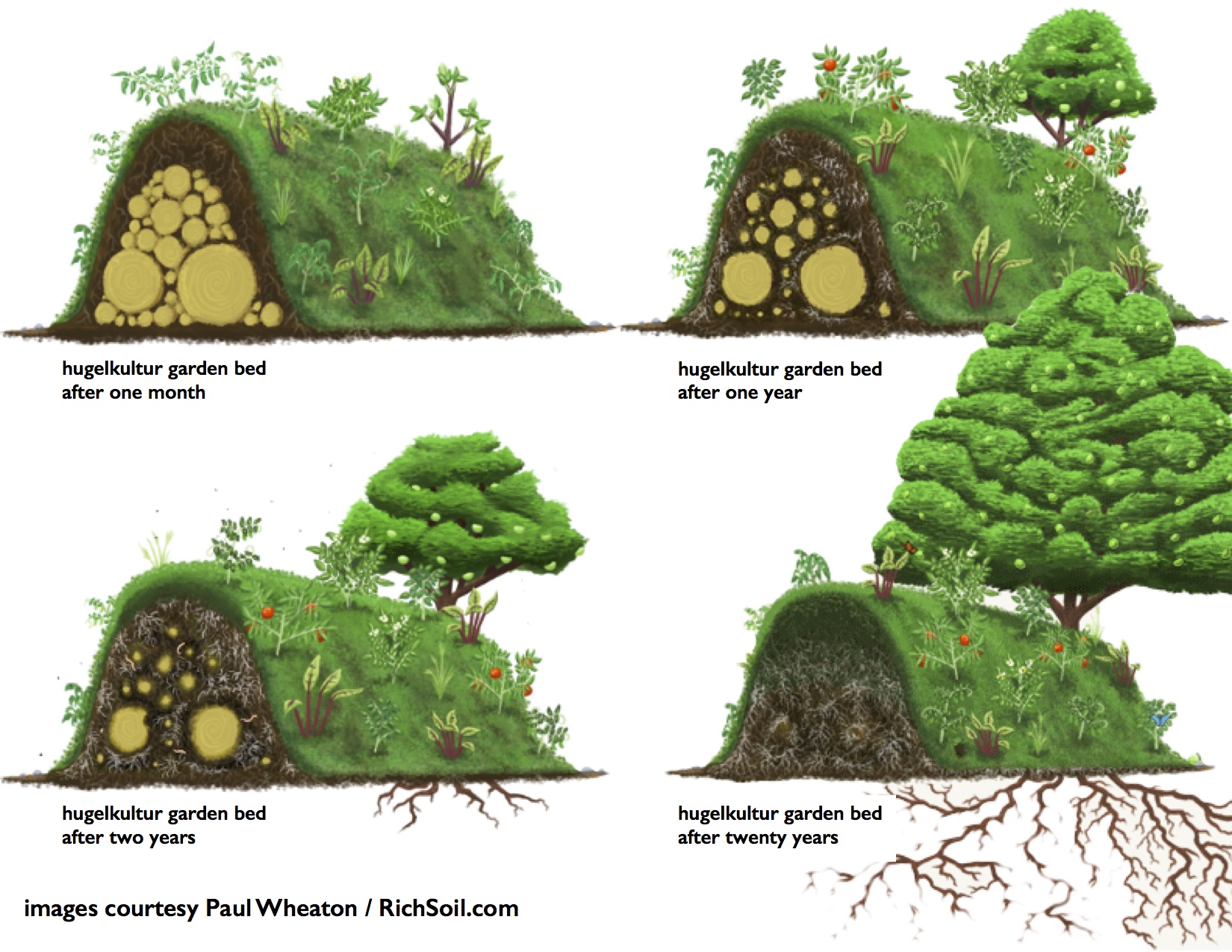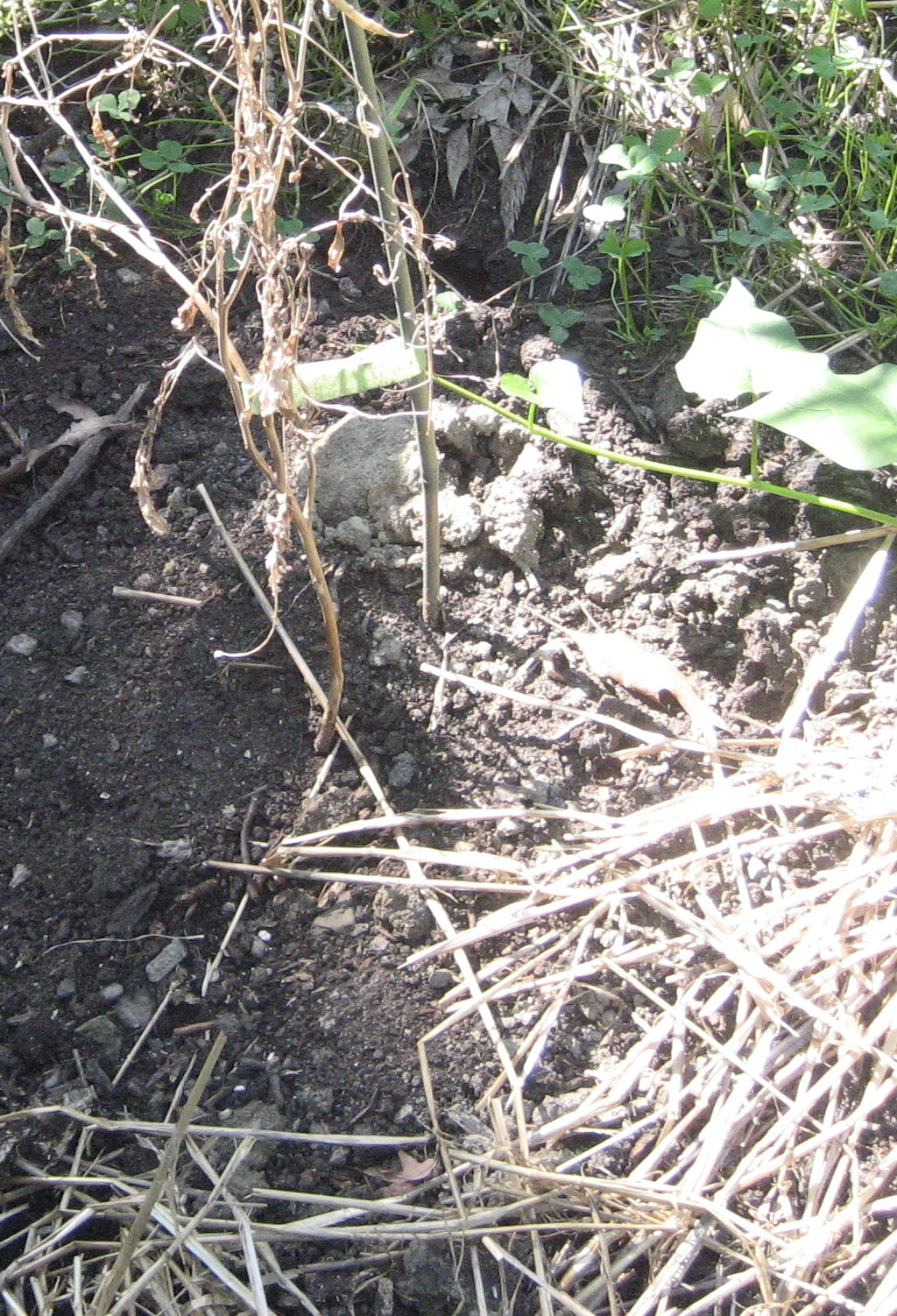Permaculture Success….and Failure
Three years ago, I and five other permaculturists (including GARDENOPOLIS Cleveland co-editor Ann McCulloh) built a Hugelkultur in my back yard. The name comes from the German “Hügelkultur” or “hill culture” and consists of a 5-foot+ pile of logs and branches covered with soil. Ideally, over time, a Hugelkultur evolves like this:
In theory, Hugelkulturs offer gardeners multiple benefits. One can simultaneously (1) recycle logs from downed trees; (2) increase gardening surface area; (3) create a sun trap to extend the growing season; and (4) extract water and nutrients from the decaying trees and, thus, eliminate the need for watering.
I’ve had to make adjustments to my Hugelkultur. My first installation of (conventional) top soil contained too much sand. Rain and snow melt quickly eroded much of it away. I then replaced the soil with a sturdier mixture of clay fill and compost, which has stayed in place.
And some plants seem to love their whole Hugelkultur experience! Here’s an exuberant horse radish that seems to be burrowing deep into the decaying wood’s nutrients and water.
But I’ve had failures, too. Here’s a dried out (and barely recognizable) kale plant that couldn’t survive the drought and my three week absence from Cleveland.
Maybe its root didn’t go deep enough to tap the underlying moisture or maybe, as Ann suggests, it, like all brassicas, just didn’t relate to the heavily fungal soil created by decaying wood. Since my basil (of course, a non-brassica) did well —-just a few feet away, not especially deep-rooted–I’m inclined to accept the latter explanation.



Interesting concept. How do you care for the hill in regards to mowing? Or do you just cover the hill with plants ?
You don’t mow–despite the grassy looking drawing! You grow crops/flowers. Beans, potatoes, swiss chard have all done well on my hugelkultur–or would have if the deer hadn’t eaten them. This fall I’m planting garlic, which deer and rabbits don’t like.
I now have two hugelkultur in my garden. One was built two years ago and I put one in this year. I used the large limbs downed in storms from my hundred-year-old oaks as the base and did not build them as high as pictured. I read that the system’s needs to mature a few years before all the wonders of water retention and self-fertilization really become evident.
I planted cucumbers on the oldest to take advantage of the natural trellis and they have been very happy. A volunteer cherry tomato plant also was very prolific. I did need to supplement with water from my drip irrigation during August.
Thanks for sharing your experience!
This is a great way of maximizing space and also provides a barrier to your property. We have a family camp that we are going to try this on a large scale to provide a defensive wall with purpose.